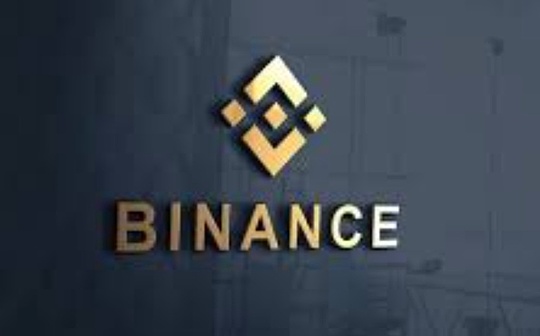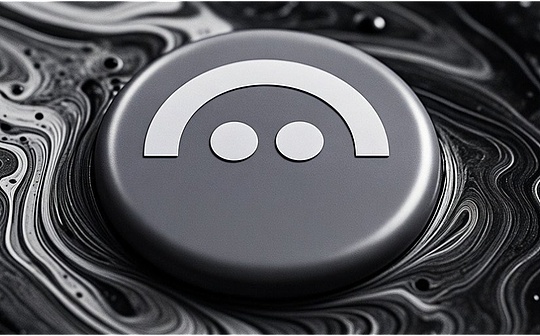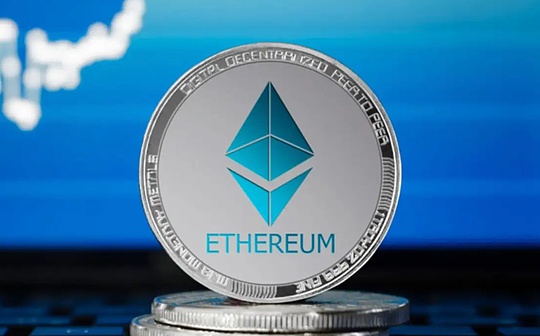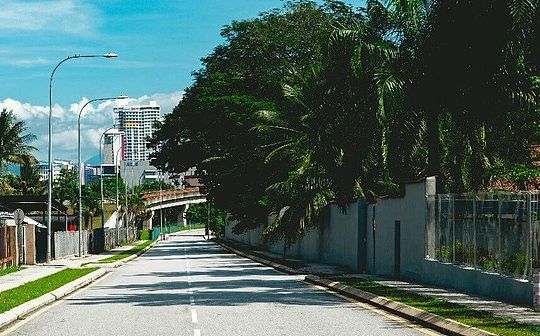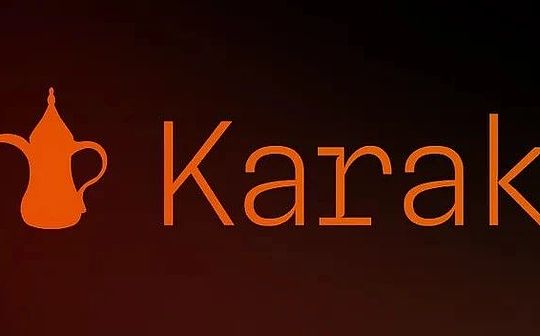
Author: Biteye core contributor Viee
The fast -moving and being born Karak from the financing of 1 billion valuation to the financing toLaunched early visit pledge plan, To support various assets now, it only takes about two months.
Where is Karak, which is regarded as a rookie of RestAKing, how much water can be settled on the recovery track?How to participate in Karak early in the project to get a greater probability airdrop?This research report Biteye will take you to understand Karak Network in depth.
01Karak, which is 1 billion valuable in Hengkong,
Karak Network is a RestAKING network, similar to the pledge projects such as Eigenlayer, and also uses integral mode to motivate users to pledge to obtain multiple returns.
In December 2023, Karak announced that it had received $ 48 million in Series A financing, led by LightSpeed Venture Partners. Mubadala Capital, Coinbase and other institutions participated. Among them, Mubadala Capital is the second largest fund of Abu Dhabi.The value exceeds $ 1 billion.

(Figure: Karak A round of financing details)
In February 2024, Karak announced the launch of an early visit plan to allow users to pledge on Karak to earn XP points. In addition to getting a reward for cooperative projects, they can also get Karak XP.XP is distributed through the agreement, and it may eventually be airpaced by converting points into tokens.
On April 8, 2024, the Private Access was opened. As of April 12, the total number of different chains supported by Karak was US $ 140 million, of which Karak Network accounted for up to 48.5%, Ethereum ranked 2nd to 45.7%, Arbitrum was the ARBITRUM as an ARBITRUM as an ARBITRUM as an ARBITRUM.5.8%.

(Figure: tvl, https://defillama.com/protocol/karak #tvl-charts)
The emergence of Karak has attracted a lot of market attention. Although the total number of TVL is far less than that of Eigenlayer, there is a distinctive highlight at the technical level. It may challenge the leading position of Eigenlayer in the field of pledge.
02Karak’s technical path
2.1 Karak Network: Re -pledged layer with multi -chain support advantages
As a re -pledge platform, Karak is different from Eigenlayer, which focuses on Ethereum, Karak provides a diversified platform that supports multiple assets, including ETH, Solana, and various Layer2 token, so that it can be able to in multiple blockchain in multiple blockchainProvide security solutions in the ecosystem to have higher diversity and tolerance.At present, Karak has supported the Ethereum main network, Karak, Arbitrum and other networks.
The following is a simplified decomposition of Karak’s working principle:
-
For verificationrs, the pledged assets are assigned to distributed security service verification (DSS) on the Karak network, and the additional execution of their pledged assets is granted.
-
For developers, Karak can attract authenticants with simple and non -diluted incentive measures.Compared with the construction of a new trust network from scratch, this greatly reduces costs.
Karak serves as a bridge between developers and verifications.Developers can attract verifications by providing incentives for non -diluted tokens.
The reason is that Karak eliminates a mechanism of highly diluted rewards in order to attract and motivate verifications. This can prevent large quantities of tokens to ensure network security in the early days.damage.This setting greatly reduces cost and complexity.

(Picture source: https://docs.karak.network/karak)
Karak’s technical path has three highlights:
1. Multiasset Restaking: Karak introduces multi -asset re -pledge function, which is a new security mechanism.Under this mechanism, users can re -pledge various assets, such as Ethereum, liquidity pledged tokens, stable currency, etc. to earn rewards.This multi -asset re -pledge not only increases the potential income of users, but also greatly enhances the security of various DAPPs, protocols and DSS.
2. Restake Anywhere everywhere: Karak has internalized a concept of universal pledge, so that security reuse infrastructure can be accessed by any chain.This convenience enables developers to focus more on innovation and product development without having to spend a lot of time and resources in the initial safety measures.
3. The development environment of plug -in and playable (Turnkey Development): Karak makes the new system connects a strong and secure trust network from the beginning, which significantly reduces the threshold of the new agreement to ensure the threshold faced by its own safety, so that these agreements can be in theIt runs without complex and safe settings.

(Picture source: https://docs.karak.network/karak)
In short, Karak’s innovation not only provides users with a re -pledge opportunity for multiple assets, but also greatly simplifies the security process of the new agreement.These characteristics have enhanced Karak’s competitiveness and attractiveness in the same track.
2.2 Comparison of Karak and Eigenlayer
Like Eigenlayer, Karak is a re -pledge agreement, which means that it enables the pledged ETH and other assets to pledge through multiple network verifications, and at the same time enables the verifiers to get additional rewards.At first glance, Karak seems to be the “imitation disk” of Eigenlayer, but compared to the technical path of the two, you can find some differences.
So why is Karak’s “imitation disk” of Eigenlayer? What is the difference?
Reason 1: DAPP on Eigenlayer is called active verification service (AVS), and DAPP on Karak is called distributed security service (DSS).Detailed explanations will be performed in the next part.
Reason two: Eigenlayer’s execution layer is on the main network of Ethereum, but Karak has its own Layer2 (called K2) for sandbox testing for DSS to develop and test before launching on Layer1.
The first question needs to be discussed here: What is AVS and DSS?What are the differences?
AVS’s full name Actively Validated Services is a concept in the Eigenlayer protocol.The AVS analogy can be simply used to provide “middleware” to provide services with similar data and verification capabilities for terminal products.For example, the prophecy machine is not a terminal product, but it can provide data services for DEFI and wallets, which is an AVS.
Understanding Eigenlayer’s AV (active verification service) can pass a simple and vivid metaphor:
Imagine Ethereum is a huge shopping center, and various Rollup L2 (second -layer solution) is like a shop in a shopping mall.If these stores operate in the shopping mall, they need to pay rent. This is equivalent to paying GAS in the world of Ethereum so that their transactions and status data can be packaged and verified.On the ledger.
In this metaphor, Ethereum not only provides the physical space (block space) of the store, but also is responsible for security (verifying the legality and consistency of transactions) to ensure that all store transactions are safe and effective.
Eigenlayer’s AVS is like providing a economic and affordable similar service for hawkers (projects) who want to set up a booth outside the shopping mall.These small merchants themselves cannot or want to operate in the shopping mall, such as mobile shops (need liquidity), street shops (good geographical location), but these merchants also want to use some services from large shopping malls, then AVS can provide them with services to provide services to them.EssenceAlthough it may not be as comprehensive as security inside the shopping mall, it is reduced in consensus security, and the cost is lower.However, this can provide a data or trust mechanism solution that cannot be verified in the Ethereum EVM network, so that even small -scale projects can find a foothold in the vast Ethereum ecosystem even.
This method is particularly suitable for those application scenarios that are not particularly high in consensus security, such as some DAPP ROLLUP, cross -chain bridge, and prophetic machines.These projects may not require the highest level of security provided by Ethereum main network. Therefore, by selecting AVS, they can obtain the necessary security verification services at a lower cost, and can also be maintained in a relatively safe environment.The emergence of AVS is actually on the boundary of the Ethereum ecology, allowing more various projects to join, especially those small projects with limited resources but innovative.
Similar to Eigenlayer, Karak also has its own AVS version, called Distributed Secure Services.Different from Eigenlayer is limited to Ethereum ecology, Karak introduced a new concept -providing re -pledge services for multiple assets, supporting anyone to use any assets on any chain.
In the environment of Ethereum alone, AVS needs to compete with each opportunity to provide Ethereum income, and if there is no airdrop speculative expectations, this competition is unsustainable.The DDS can absorb more assets on the chain, use the re -pledged assets to enhance security, while reducing operating costs.Compared with ETH, the cost of many assets is lower, which means that DSS has a simpler and more feasible sustainable benefits.
It is worth noting that the first AVS was launched on April 10th on the EIGENLAYER main network, and released 6 AVS one after another.Karak plans to launch the first DSS in the next few weeks.
Next, we discuss the second question: What is Karak’s Layer2 K2?What is different from Eigenlayer?
K2 is a Layer2 built on the Karak network.
Operations on Layer1 cost higher costs for developers and users, so K2 provides a new solution. It is a “sandbox” environment that allows distributed security services (DSS) to formally deploy on L1.Development and testing in K2 to ensure that they are stable and secure before practical applications.In addition, by adding custom previles, more verifications can be allowed to verify DSS. K2 not only improves efficiency and security, but also decentralized.
Compared with Eigenlayer used as the main network of Taifang, Karak has created its own execution layer (K2), and is based on Layer2. It can provide faster trading speed and lower trading costs.sex.
After understanding the above two questions, we can see that Karak and Eigenlayer use differentiated technical paths, which also brings the most intuitive differences.
Karak supports more diverse assets outside ETH, plans to cover Layer2 such as Solana, Tia, and Arbitrum, Optimism, and aiming to create a cross -chain diversified and re -pledged layer.Eigenlayer focuses on Ethereum ecology and uses ETH as the main asset of re -pledges, which is different from Karak’s wider tolerance.
We can use an analogy to help understand. Imagine Karak like an international airport connecting multiple countries. Welcome to passengers (assets) from all over the world.Such as Arbitrum).Karak’s goal is to provide these passengers with a convenient and secure transit station.In contrast, Eigenlayer is more like a subway system designed for a metropolis (Ethereum ecosystem). It focuses on serving residents and tourists in the city of Ethereum to provide professional and efficient transportation services (transactions and efficient transportation services (transactions and efficient transportation services (transactions and efficient transportation servicesoperate).
In other words, on the basis of similar to Eigenlayer, Karak has expanded the scope of re -pledged assets, including Ethereum, various mobile pledge Ether coins and stable coins, thereby expanding the range of users.
It turns out that this method of Karak is effective.According to DEFILLAMA data, taking stablecoin as an example, the stable coins in Karak’s pledged encrypted assets account for about 19%, and the stabilization coins in EIGENLAYER may be less than 0.27%in the cryptocar assets. It can be seen from the following cake maps.

(Figure: Karak again pledged cryptococculatory assets fine https://defillama.com/protocol/karak #tvl-charts)

(Figure: EIGENLAYER again pledged the cryptocar assets clear https://defillama.com/protocol/eigenlayer#tvl-charts)
03Is Karak an attack on Eigenlayer?
Back to Sushiswap’s vampire attack on UNISWAP, what would happen if Karak issued coins than Eigenlayer?
We must first understand what is the specific “Vampire Attack”?Vampire attacks are a strategy in the field of encryption, a project (Sushiswap in this example) is trying to seize another similar item by providing better incentives (such as higher liquidity provider LP rewards) to seize another similar item (such as Uniswap)Users and liquidity share.
Simply put, “vampire attack” is to capture liquidity shares from the target object, thereby increasing its own liquidity and value, thereby completing “blood -sucking”.
In 2020, Sushiswap successfully attracted a lot of liquidity through the code of the fork Uniswap and introduced Sushi as its native token.As a similar protocol with similarity, Karak and Eigenlayer do not rule out that there will be “vampire attacks”.If Karak is issued first, we can speculate that the following points may happen:
1. Karak supports a variety of assets, which may attract potential re -pledged users who seek asset diversity. If vampire attacks are performed, this will challenge EIGENLAYER.
2. Once Karak and Eigenlayer run in multiple AVS/DSS main networks, Karak may perform vampire attacks and transfer Eigenlayer LRT assets from EIGENLAYER to Karak.(Remarks: Karak allows the LRT to pledge those who have mortgaged ETH on EIGENLAYER. In fact, it is allowed to take the LRT to pledge, a bit of a baby.)
If Karak is issued first, it will indeed attract LRT in the entire market. What is more important is that the Karak’s own chain is already available, and the speed and cost are okay.After all, one of Karak’s outstanding advantages is that there is an execution layer, which determines that it is not the younger brother of Eigenlayer, but an opponent.
04How to become early participants in Karak
At present, the Karak project is still in a relatively early stage. It can be pledged by the official website to obtain points XP incentives.In the future, Karak’s airdrops will probably be carried out by converting points into tokens.The number of ease of XP may depend on the time and evening level of the pledge, the duration of the pledge, and the number of new users entering through the invitation code.
Enter Karak’s official website pledge interface
Official pledge link:
https://app.karak.network/
Currently Karak’s pledge network: Ethereum main network, Arbitrum (L2), Karak (L2).
Karak supports pledge assets: multiple LST assets such as METH, various LRT assets such as Pufeth, and three stablecoins: USCT, USDC, and SDAI. Pay attention to the differences in the tokens supported by different networks, please confirm it carefully.
To put it simply, the integral rules, in Karak pledge can also get “pledge rewards+ re -pledge rewards+ Eigenlayer points+ pledged LRT points+ karak XP”.
At present, Karak is not a “one fish eat more” similar to Eigenlayer, but in the case of Eigenlayer’s “saturated”, it is a higher return by betting on other agreements, but the risk of revenue coexists.

It is recommended that you pledge directly on Karak (mentioned Karak’s L2 network above), and you can get double Karak points. The specific steps are as follows.
First, add Karak network
Enter ChainList, select Karak Mainnet on the left
https://chainlist.org/?search=karak

Then, the assets cross the Karak chain.If you choose to enter the pledge via the Karak chain, three tokens are currently supported: RSWeth, USDC, WETH

There are two cases of pledged RSWETH
1. There are RSWETH in your hand. From the Karak official bridge to the Karak chain.
2. There is no RSWETH in your hand. Get RSWETH (SWELL can only pledge the main network ETH in SWLL, you cannot first cross the ETH to the Karak chain and pledge), and then cross the Karak bridge to the Karak chain.
Swell pledge address:
https://app.swellnetwork.io/restake%EF%BC%89
There are two cases of pledged Weth
1. There is WETH in your hand. From the Karak official bridge to the Karak chain.
2. There is no WETH in your hand. From the Karak official bridge or minibridge, you can cross ETH from the main network to Karak. When pledged, open Auto-Wrap Eth.
Karak official bridge and minibridge address:
https://karak.network/bridge
https://minibridge.chaineye.tools/?src=arbitrumP; DST=karak

Finally, complete pledge at Karak Pools.
Since the three tokens supported are not ETH, which means that the cross -chain past requires ETH as a GAS cost.Especially WETH. If you cross the ETH across the past, after selecting MAX in, the first step is a deposit function, which is actually Wrap Eth, which will cause the ETH in the wallet to be gone, resulting in the second step in the second step.
The recommended operation is as follows:
1. Package RSWETH and USDC, you can use Minibridge cross -chain tools to cross a little Eth to use GAS to fees in the past.
2. Pick up WETH, leave a little ETH, don’t click MAX.But it doesn’t matter if you are accidentally picked up by MAX, you can use Minibridge to cross a little ETH.
? Minibridge supports ETH from the main network to the Karak chain, supports small cross -chain, and costs cheap.For the GAS fee for paying in the Karak Chain, welcome to poke the link.
https://minibridge.chaineye.tools/?src=arbitrumP; DST=karak
05Risk reminder
At present, the disputes around Karak are mainly concentrated in two aspects.
-
First, since the team received financing by the end of 2023, it launched products in February this year.As a re -pledge project, there are currently few discussions around technology, and it is more to seize the market in marketing methods such as “points activities”.
-
The second is that the “self -protection behavior” of the previous project of the Karak team was criticized by the community, and KOL pointed directly at RUG.In response to this question, the team responded in DC on April 9.

In short, the blockchain project is always accompanied by contract risks and team risks, and it is especially true to absorb hundreds of millions of dollars.However, from the current market environment, new users prefer projects with good investment institutions and huge financing backgrounds, and old users pay more attention to the past history of the project team.
06Summarize
How to balance risks and benefits has always been a matter of concern for users.
As a rookie of the re -pledged track, Karak’s 1 billion valuation and unique technical highlights have added a possibility to challenge the dominant position of EigenLayer’s pledges.At the same time, Karak supports a variety of LRT token pledges, including and is not limited to Swell, Puffer, Renzo, Etherfi, KelpDao, etc., which also promotes the prosperity of Ethereum pledged ecology.
Perhaps the “crisis” was perceived, Eigenlayer announced that it would cancel all deposits limit on April 17, Beijing time, and re -open the deposit window.
Do you choose EigenLayer or bet on Karak to collect higher returns on Karak?This chess piece is in the hands of the user at this moment.

